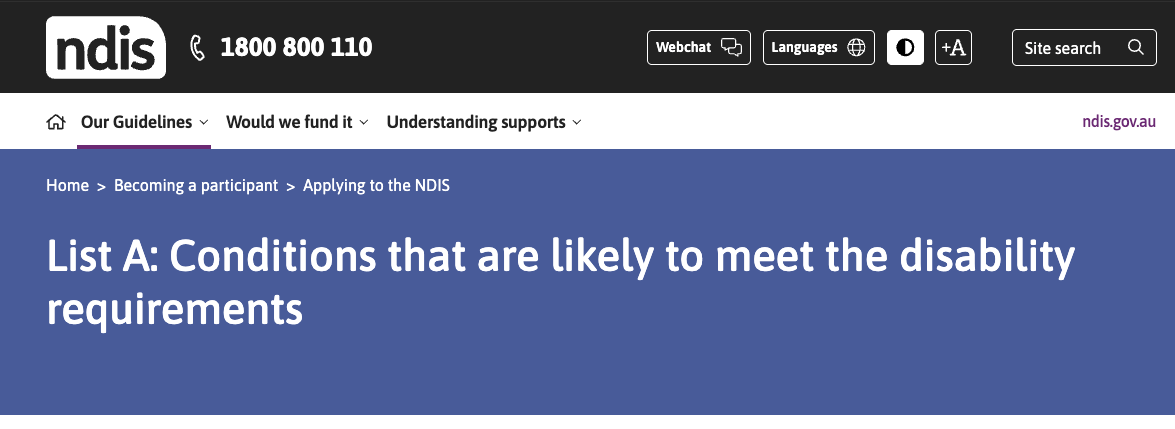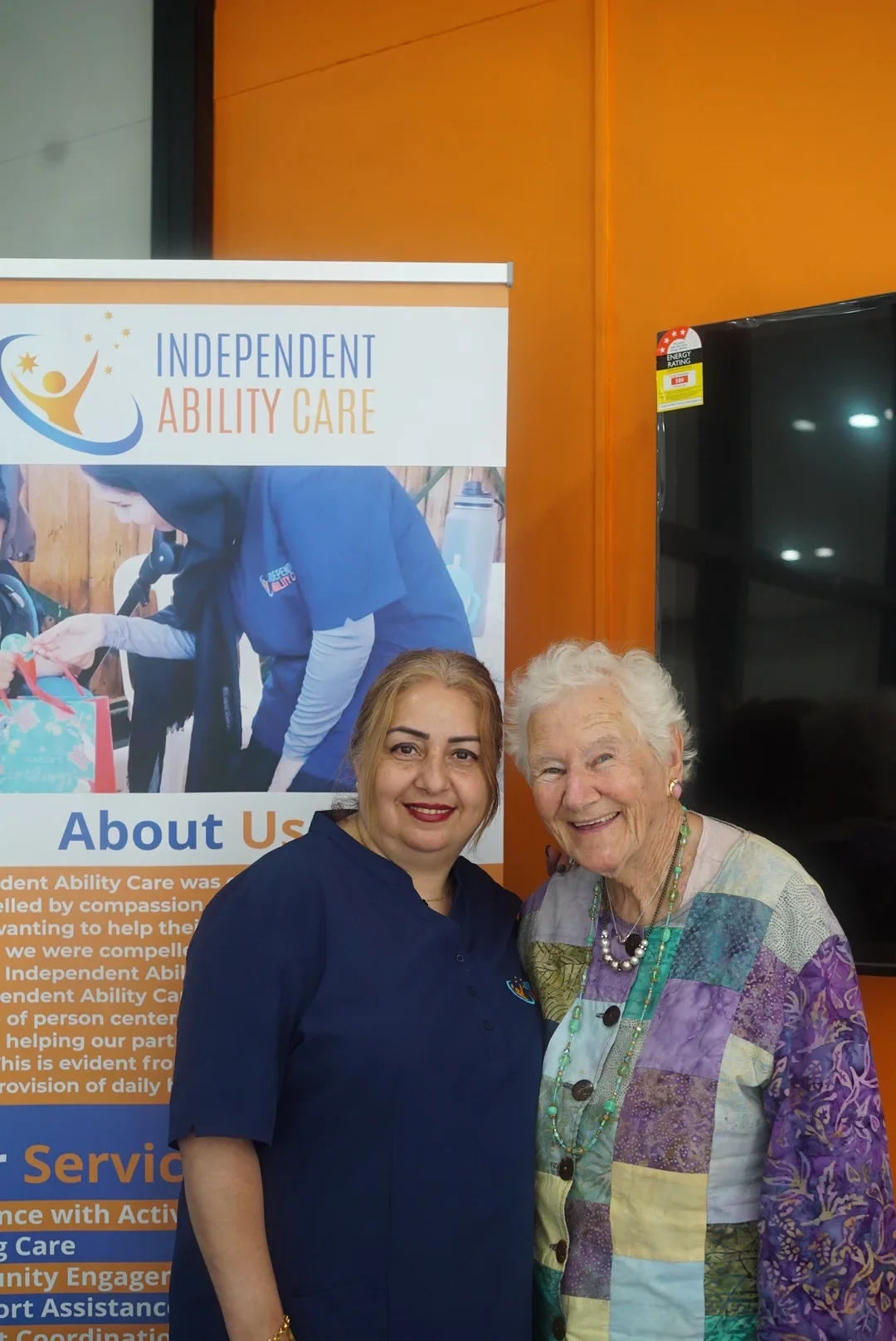Everything you, your family or your support coordinator needs to know – in plain English.

TL;DR
- Lists A–D are the NDIA’s reference tables for conditions that automatically qualify (List A), likely qualify with extra evidence (List B), or relate to WA legacy supports (List C) and early-intervention for children < 7 (List D).
- Age (< 65), residency and citizenship rules still apply.
- Psychosocial disability can also qualify if it causes permanent, substantial functional impact.
- Independent Ability Care offers bilingual support coordination (Dari, Hindi, Urdu & Tagalog) to help you collect evidence, complete the Access Request and make the most of your plan.
What is the NDIS?
The National Disability Insurance Scheme is Australia’s national insurance program for people with significant and permanent disability. Instead of a one-size-fits-all grant, it provides an individualised budget that you (or your nominee) control. The funding can cover daily living assistance, therapies, home modifications, assistive technology and community participation.
Eligibility at a glance
|
Requirement |
What it means |
|
Age |
You must be under 65 on the day you lodge your Access Request. |
|
Residency |
Live in Australia permanently and hold Australian citizenship, a permanent visa, or a Protected Special Category visa. |
|
Disability test |
Your impairment must be likely permanentand cause substantial functional impact in daily life or you need early-intervention supports. |
|
Early intervention pathway |
Extra gateway for children under 7 (developmental delay) or anyone who can clearly benefit from time-sensitive support. |
Full criteria are set out in section 24 of the NDIS Act and detailed NDIA guidelines.
NDIS disability lists
The lists are guides, not exhaustive medical encyclopaedias. You can still qualify if your condition isn’t named, provided you meet the functional tests.
List A – conditions that automatically meet disability requirements
If you have evidence diagnosing one of these conditions, the NDIA accepts your impairment is permanent and severe – no further functional assessment needed:
|
Broad category |
Examples (not exhaustive) |
|
Intellectual disability |
Moderate, severe or profound ID per DSM-5. |
|
Autism spectrum disorder |
All ASD diagnoses, including Asperger’s. |
|
Cerebral palsy |
Spastic quadriplegia, hemiplegia, dystonic CP. |
|
Genetic conditions |
Down syndrome, Fragile X, Williams syndrome, Osteogenesis imperfecta. |
|
Progressive neuro-muscular disorders |
Spinal muscular atrophy Types I-III, leukodystrophies. |
|
Severe brain or spinal-cord injury |
Post-acute injuries resulting in permanent paralysis or comparable loss of function. |
|
Sensory loss |
Permanent blindness (< 6/60 visual acuity) or deafblindness. |
|
Major limb loss |
Amputation or congenital absence of two limbs. |
List B – conditions likely to be permanent (extra evidence required)
List B triggers a closer look at how the condition affects your everyday life:
- Intellectual & learning – mild ID, pervasive developmental disorders.
- Neurological – multiple sclerosis, motor neurone disease, epilepsy (uncontrolled), Alzheimer’s dementia.
- Physical – single-limb amputation, severe congenital limb deficiency, spinal cord injury (in early rehab).
- Sensory & speech – bilateral hearing loss (> 65 dB), retinal disorders.
- Multi-system genetic conditions – Ehlers-Danlos, Marfan syndrome, etc.
You’ll need functional-capacity assessments (OT/PT, neuropsych, etc.) to demonstrate everyday impact.
List C – disability support in Western Australia
Already receiving WA government disability support before the full NDIS roll-out? List C fast-tracks transition if you: are < 65, live in WA permanently and hold eligible residency status.
List D – permanent impairment / early intervention (< 7 yrs)
For children diagnosed with conditions such as global developmental delay, muscular dystrophies, Niemann-Pick disease, quadriplegic cerebral palsy or deafblindness, the NDIA presumes they meet early-intervention criteria.
Psychosocial disability
Severe, persistent mental-health conditions (e.g., schizophrenia, bipolar I) can also qualify if they cause substantial functional impairment and are likely to be lifelong. Evidence usually comes from a psychiatrist plus a Psychosocial Disability Functional Assessment Report.
Supports you can fund
|
Budget category |
Typical items |
|
Core |
Personal care, transport, consumables, community participation. |
|
Capital |
Assistive technology (wheelchairs, communication devices) and home/vehicle modifications. |
|
Capacity-building |
Therapies (OT, physio, psychology), employment supports, support coordination, specialist housing advice. |
What the NDIS will not fund
- Day-to-day living costs (rent, groceries, utility bills).
- Medical or clinical services funded by Medicare (GP consults, hospital stays).
- Supports posing unacceptable risk of harm.
- Duplicate supports already in your plan.
- Loss-of-income payments.
(These rules come straight from section 34 of the NDIS Act and the NDIA’s “reasonable & necessary” test.)
Applying step by step
- Gather evidence
- Diagnosis letter (specialist or consultant physician).
- Recent functional assessment (OT/PT, speech path, psychologist).
- Therapists’ progress notes + assistive tech reports.
- For List A: copy of diagnostic report is usually enough.
- Lodge an Access Request (ARF) – phone 1800 800 110 or download the PDF.
- NDIA assessment – they may ring you for clarification or commission extra reports.
- Planning meeting – bring goals and preferred supports.
- Plan approved – connect with NDIS-registered providers (or use self-management).
Glossary
|
Term |
Plain-English meaning |
|
Functional capacity |
How well you manage everyday tasks (mobility, communication, self-care, social interaction, learning, self-management). |
|
Assistive technology (AT) |
Any device or equipment that helps you do things more independently. |
|
Psychosocial disability |
Disability arising from a long-term mental-health condition that seriously limits daily activities. |
|
Support coordination |
A service that helps you understand and implement your plan and connect with providers. |
FAQs
|
Question |
Short answer |
|
Does ADHD qualify for the NDIS? |
ADHD alone rarely meets List A/B criteria, but you may be eligible if it causes substantial, permanent functional impairment. |
|
Can I be on List A and still need extra evidence? |
No – List A diagnoses are accepted as meeting disability requirements, but you still need functional goals for planning. |
|
How long does the application take? |
Most decisions arrive within 21 days of submitting a complete Access Request, but extra evidence can extend this. |
|
Do I need an NDIS-registered therapist? |
Yes if your funds are agency-managed; if you self-manage or plan-manage you can choose any suitably qualified therapist. |
|
What if I’m over 65? |
You cannot enter the NDIS, but existing participants keep their plans after turning 65 and can choose to move to My Aged Care. |
Need one-on-one help?
Independent Ability Care’s bilingual team is ready to guide you through every stage – from gathering evidence to maximising your funding.No pressure – just clear answers in the language you feel most comfortable with.
Reviewed July 2025. For the most up-to-date NDIS disability lists, please visit the official NDIS Guidelines website.





